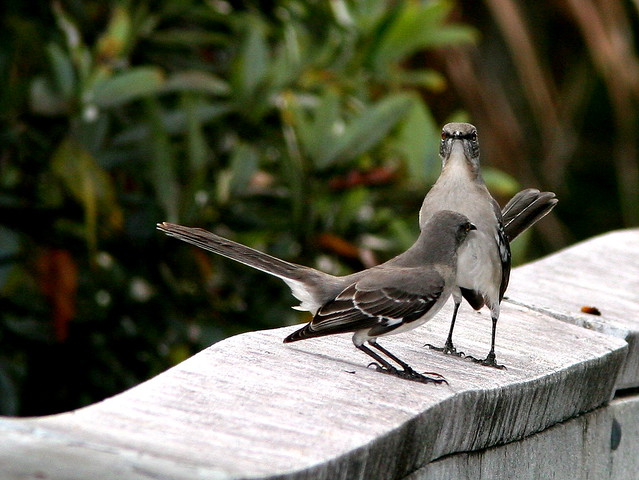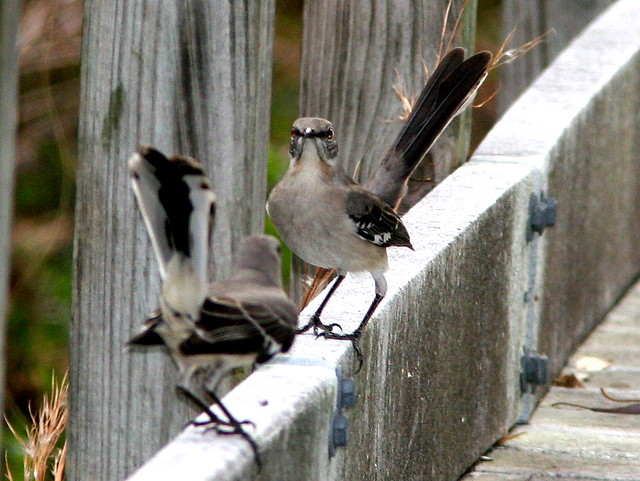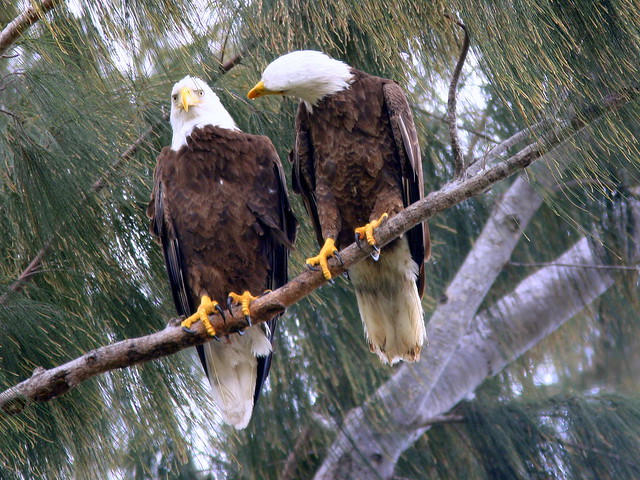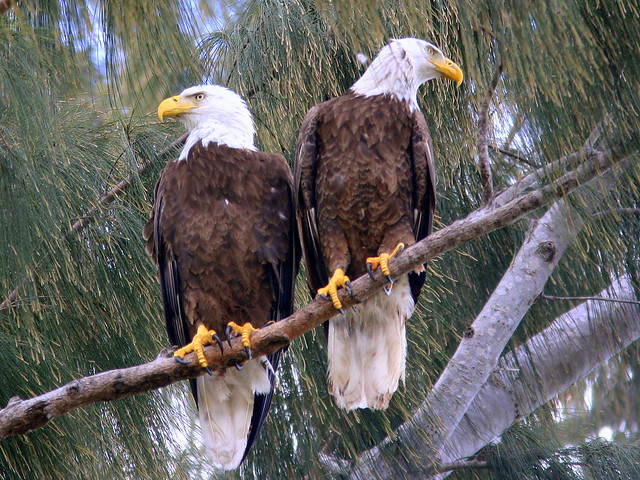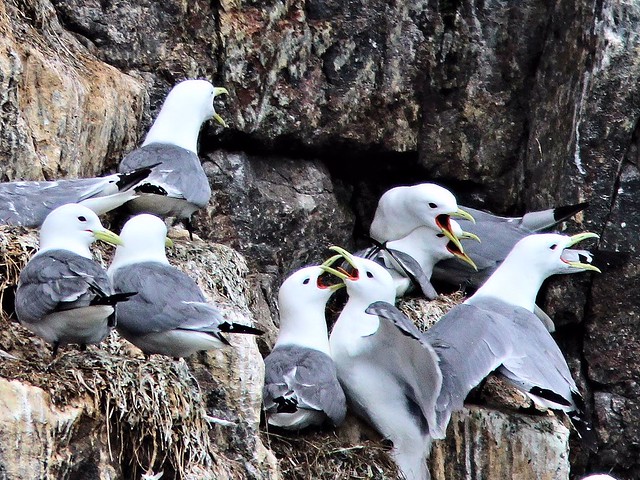Posted by: Ken @ 2:31 pm
I can’t remember when I started “playing” the piano, but by the age of 5 or 6 I could perform many simple songs, provided they were on the white keys. Within a couple of years I taught myself to accompany the melodies with “um-pah” chords with my left hand. Hit the root note with my pinkie, and go up one octave with my index finger; add the third note above and the fourth below. Make “sad” chords by moving my thumb down one half note, switch the chords to fit the sound of the melody. All of this without knowing the names of chords, whether major, minor, sevenths, ninth, diminished, or augmented. Only much later in life did I learn something about music theory. The theory helped me understand the rules, and made it easier for me to apply their principles and advance in knowledge.
Likewise, I’ve been watching birds most of my life. I know many of their sounds and behaviors, but I never fit them into any kind of system or theory. Jon Young, in his little book What the Robin Knows: How Birds Reveal the Secrets of the Natural World (Houghton Mifflin Harcourt), has enriched my birding experience by providing such a framework. It’s not a rigid system or code, but it helps interpret the actions of birds.
We’ve all had days when birding was slow. The time of year is right, the habitat looks perfect, but the birds seem to have disappeared. We might hear a familiar bird calling or singing here or there, but none are in view. We turn to watching butterflies and dragonflies, or simply end up saying it wasn’t a “birdy” day and return home disappointed.
An endorsement on the dust cover of Young’s book states “…[A]fter reading his marvelous book…[y]ou’ll discover a universal bird language that will speak to you whenever you go outdoors.”
Don’t you ever wish you could understand the language of birds? I’ve talked to the birds, and they’ve talked back to me and then to each other (Much ado about a squeak). Once, their excited scolding helped me trace the movements of a Bobcat as it circled around behind my back in the wetlands, and their silence has alerted me to the presence of predators overhead.
My iPod has an app which can translate speech into any of several selected languages. Since I have Cuban in-laws with extended families, I have used it to communicate with some of the non-English speaking relatives. Sometimes what comes out bears little resemblance to the intent of our words. We end up laughing into the speakers. Laughter, facial expression and other non-verbal clues often reveal more than our words.
This book won’t provide a literal translation of the robin’s calls and songs. It goes beyond the individual sounds, and provides them in a behavioral context. Much attention is devoted to the “body language” of birds when they are subjected to various types of disturbance. Their responses are described in three dimensions (and in a fourth dimension, time), supplemented by instructive diagrams. Young calls them the twelve “alarm shapes.”
What were these Gray Catbirds saying to each other? Are they fighting, or are they courting? Actually, their calls did not sound angry, and their pursuit seemed gentle, so I assume it was the latter.
These two Northern Mockingbirds were issuing more hostile calls.
This pair appeared to be squabbling over their property lines.
The mockingbird on the left was unwilling to give ground, and the hostility escalated, evidenced by their body language and slurred calls.
They finally came to blows. If my iPod were able to translate their “words,” there would probably be many bleeps in my transcript of this confrontation. The bird to the right flew off. My guess is that it was the intruder.
Birds cannot smile or grimace. The bony ridge over the eyes of eagles produces a perpetual frown. The male Bald Eagle, on the right, was acting amorous. Was he whispering “sweet nothings” into his mate’s ear?
He is startled when she rebuffs him severely.
Now they are obviously not on speaking terms.
Wild creatures don’t waste precious energy, so their actions are usually purposeful. What were these Black-legged Kittiwakes trying to accomplish with their raucous clamoring?
The first few chapters of What the Robin Knows classify and describe five basic types of bird vocalizations. Young calls the first four “baseline:” songs, companion calls, territorial aggression, and adolescent begging. These are the sounds associated with the birds’ normal activities. Disturbances and threats that upset this state of equilibrium stimulate birds to issue various types of alarm calls, the fifth category.
The text of the book provides examples of calls and songs by referring the reader to a collection of audio files at the author’s website, BirdLanguage.com. At first I found it a bit cumbersome to interrupt my reading to access the desktop computer. I tried listening with the browser on my iPod, but the files were in an incompatible format, possibly Adobe Flash. I even put off reading the book until I could use my netbook which I had left back in Illinois. Ultimately I found it easiest just to listen the the entire set of sounds in one sitting. Many were already familiar, but the experience helped me to understand their classification in the author’s scheme. Doing it this way also demonstrated some inter-species similarities between the various types of calls. Contact calls generally sounded soft and peaceful, while alarm calls were emphatic and energetic.
In late summer I took my usual morning walk in the wetlands next to our south Florida home. Although the sun was just rising, I was not greeted with a chorus of bird song. A couple of Eastern Towhees could be heard singing their “tip-tip-tee-tee-tee-tee-tee” song. A Common Ground-Dove produced an intermittent coo-like low whistle, a few mockingbirds sang halfheartedly, and a Carolina Wren burst into song and then fell strangely silent. Common Grackles fed their begging offspring. It was a perfect morning to pay attention to the birds’ baseline sounds.
Back in Illinois in the fall for warbler migration, I birded my favorite patches and had the familiar experience of having some great days with lots of sightings and other days when I was greeted by an eerie silence. But, thanks to this book, I made a special point of listening to the silence. Baseline sounds that I previously ignored took on new importance. I recognized the little two-note begging calls of fledgling goldfinches, the soft “seep!” contact calls of robins, and the quiet “chips” of a pair of cardinals.
While sitting in our daughter’s back yard I saw a good example of one such “shape.” I was watching chickadees, Mourning Doves and House Finches at and around her feeder. Suddenly the birds on the ground flew up into the trees. Some selected perches nearby, but all perched at least 5 feet off the ground. I knew that this was not the “shape” of an alarm triggered by a bird-seeking raptor such as an accipiter or falcon. At first I did not see the threat, but in a minute or so a neighbor’s dog ambled along their back fence line.
I think back to the time when I was photographing a Savannah Sparrow in the same back yard. It was exposed out in the open on a fence rail. Suddenly the bird looked up and froze in place. I also glanced up to see a Red-tailed Hawk moving along at rather high altitude. The sparrow appeared to recognize that the hawk posed no immediate threat, but took the precaution of stopping all motion so as not to attract undue attention. Contrast this to the time when a Sharp-shinned Hawk suddenly swooped into the yard, and the birds dove for the nearest cover.
Jon Young draws upon not only his years of experience learning and teaching the language of birds, but also that of others, including professional trackers and indigenous elders, dwellers of bush and jungle. When you read this book, I suggest that you get out in the field after reading each chapter and allow what you have learned to enrich your birding experience.















